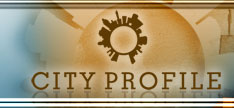Fort Tryon Park is an expansive 27-hectare park found on a cliffy land situated within the Hudson Heights neighborhood. The neighborhood is within Washington Heights which is a place in the Northwest region of Manhattan. The location of the Fort Tryon Park gives visitors breathtaking vistas overlooking the nearby sceneries.
Two of the most famous attractions within the park are the picturesque Heather Garden and the Cloisters which is a recreation of a Medieval convent. The Cloisters houses a division of the Metropolitan Museum of Art and boasts of beautiful pieces of medieval art.
Fort Tryon Park is found at the previous location of Fort Tryon which served as one of Fort Washington?s many outposts. The fort played an important role during the height of the American Revolution and was used by the Continental army in its campaign to resist the forces of the British Army.
Unfortunately, the British Forces with their Hessian soldiers proved to be powerful and defeated the American forces on November 16, 1776. Upon their victory, the outpost was renamed to pay tribute to Major General Sir William Tryon who served as the colonial province of New York?s last British governor. Rubbles from the fortifications can still be seen in the park. A flagpole and a plaque remember the resistance of the American forces.
After the American Revolution, Fort Tryon was divided and many of New York?s elites constructed their estates in the cliffy terrain. John D. Rockefeller began to purchase these properties to build a new park in 1917. Rockefeller tapped into the landscape design company Olmsted Brothers established by stepbrothers John Olmsted and Frederick Law Olmsted, Jr. who was the son of Central Park?s co-creator.
The Olmsteds utilized the uneven terrain to come up with a distinct densely wooded park featuring steep winding pathways, bridges made of stone and terraces that offer visitors a fantastic view of the nearby sceneries, more specifically the Hudson River. Rockefeller also acquired the land opposite the Hudson River. He gave both the park and the land to the city of New York as gift in 1935.
The most popular garden in Fort Tryon Park is the 1.2-hectare Heather Garden. It is a lovely multi-hued garden with beautiful views of the Hudson River. For several decades after World War II, the garden had been deserted and when the 1980s dawned, its panoramic views have been blocked by overgrown plants. The Heather Garden was granted landmark status in 1983 and in 1985, during the park?s 50th anniversary, the New York City Department of Parks at last took a move to rehabilitate the garden. The park?s restoration was done following the original landscape and was finished in 1988.
There?s another garden in Fort Tryon Park which less popular than the Heather Garden is the Alpine Garden which is located near the park?s eastern entrance. The garden is somewhat unusual with rocky inclines, narrow zigzagging stairways and a grotto. Before, it was more unkempt than the Heather Garden. Luckily, a generous donation from the Peter Jay Sharp Foundation in 2006 funded the renovation of the garden.
American Sculptor George Grey Barnard built a small museum in 1914 where he exhibited his personal medieval art possession. The museum is found in the Hudson Heights and in 1920, again via a financing from John Rockefeller, the Metropolitan Museum of Art was able to buy Barnard?s collection. In 1938, the Metropolitan Museum of Art established a new depository of this art collection and build Barnard?s original museum to resemble a French Medieval Cloister. Today, The Cloister is one of the main attraction at Fort Tryon and is equally grand as the art collection it houses.
| |



